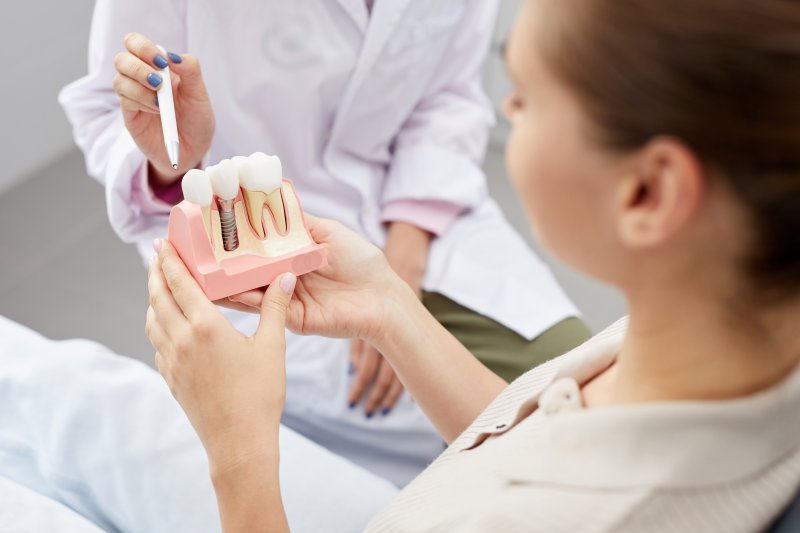
You can trust dental implants as the ideal solution to tooth loss. After all, their long-term success rate stands at over 95%! Still, even these restorations don’t always work as they should. Patients may notice their implants loosen (or even fail) over time. You’ll want to take appropriate action if that should happen. As for the details of this proper response, let your San Antonio dentist explain. Read on to learn what to do when your dental implant feels loose.
What Makes an Implant Come Loose?
For starters, note that a loose implant can have various causes. These include the following:
- An Initial Overload – Occasionally, a freshly placed implant may endure too much pressure. This overload can then keep it from fusing with the jawbone correctly.
- Damaged Restoration – Normally, a bridge, denture, or crown is firmly set on top of your implant. Should any of these restorations get damaged, it can feel loose.
- Peri-Implantitis – After implant surgery, bacteria may reach the gums supporting your implant. You could then develop peri-implantitis, an infection that could loosen your prosthetic.
- Failed Osseointegration – An implant should slowly fuse with your jaw via osseointegration. However, your body may be unable to grow new bone tissue for this process. The result would be a dental implant that feels loose.
How to Help a Loose Dental Implant
If your dental implant feels loose, see your local dentist as soon as possible. They’ll have the training and resources to fix the problem. In fact, they can likely do one of two things to resolve your dilemma.
If only the crown or abutment is loose, treatment is simple. The dentist will first unscrew or detach either one from your mouth. Next, they’ll make or send for a suitable replacement. This process can take weeks, so you’ll wear a temporary restoration in the meantime. The dentist will then fit the substitute part on your implant once it arrives at their office.
When the implant itself is loose, things get trickier. The proper response in this scenario is always a complete removal. Afterward, the dentist may suggest or perform a bone graft. You’d need additional months of healing following the grafting process. Lastly, the dentist will re-attempt implantation and fit a new restoration.
In an ideal world, you wouldn’t need to know what to do if your dental implant feels loose. That said, this knowledge helps you avoid oral issues and ensures long-term treatment success. Talk to your dental provider if you’d like further details on the matter.
About the Author
Dr. Hiren Patel is a certified dentist based in San Antonio, TX. Having earned his dental degree from the University of Colorado’s School of Dental Medicine, he has strong expertise in all major dental fields. His work covers preventive, cosmetic, and restorative dentistry, as well as emergency oral care. Today, Dr. Patel practices at HIC Dental – Implant & Family Dentistry and is reachable on his website and by phone at (210)-590-2736.
